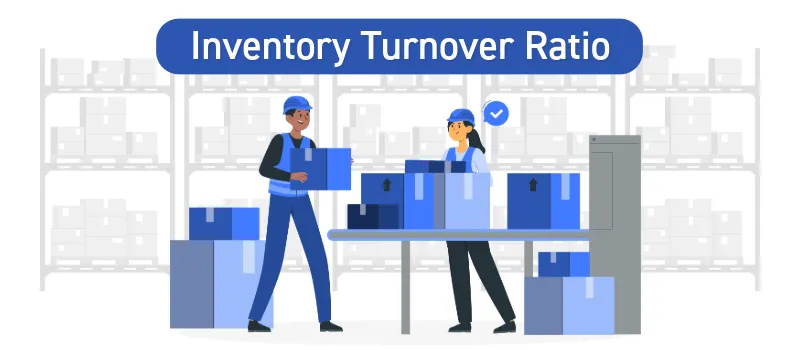
Inventory Turnover Ratio: How to Calculate Inventory Turnover (and Why It Matters)
What is USPS First Class Mail?
When it comes to running an efficient, profitable business, knowing how your inventory is performing is key. One of the best ways to measure that is by calculating your inventory turnover ratio. It’s a simple but powerful formula that can tell you how quickly you’re selling your stock—and how well you’re managing your cash, storage space, and purchasing strategy. Whether you sell on Amazon, Walmart, Shopify, or multiple marketplaces, understanding your inventory turnover is essential for staying competitive and scalable in 2025.
What Is Inventory Turnover Ratio?
At its core, the inventory turnover ratio measures how many times your inventory is sold and replaced over a specific time period—usually a year, quarter, or month. It reflects how efficiently you’re managing your stock.
In plain terms: Are you moving products fast enough, or is inventory just sitting on your shelves?
The turnover rate is one of the most important operational KPIs for retail, ecommerce, manufacturing, and wholesale businesses alike.
Why Does Inventory Turnover Matter?
Understanding your inventory turnover helps you:
- 📦 Improve cash flow by turning products into revenue faster
- 🏪 Maximize warehouse space by avoiding overstock and dead inventory
- 💰 Increase profitability by reducing holding costs and markdowns
- 🧾 Fine-tune purchasing decisions with better demand planning
- 🚫 Avoid stockouts or surplus, both of which can hurt your business
The Inventory Turnover Formula
Here’s the basic inventory turnover formula:
Inventory Turnover = Cost of Goods Sold (COGS) ÷ Average Inventory Where:
- COGS = the cost to produce or purchase the goods you sold during the period
- Average Inventory = the average value of your inventory during that time
Example:
Let’s say your annual COGS is $600,000, and your average inventory is $150,000: Inventory Turnover = $600,000 ÷ $150,000 = 4.0
That means you sold and replaced your inventory 4 times in that period—also referred to as four inventory turns.
How to Calculate Average Inventory
To calculate average inventory, use this simple average inventory formula:
Average Inventory = (Beginning Inventory + Ending Inventory) ÷ 2
If you started the quarter with $100,000 in inventory and ended with $200,000:
Average Inventory = ($100,000 + $200,000) ÷ 2 = $150,000
This number gives a clearer picture of your stock performance than a single moment-in-time figure.
Inventory Turnover vs Turnover Rate vs Inventory Turns
While they’re often used interchangeably, here’s a quick breakdown:
| Term | What It Means | Common Use |
|---|---|---|
| Inventory Turnover | # of times inventory is sold/replenished | Standard KPI |
| Turnover Rate | A broader term, sometimes refers to sales or staff | Used across industries |
| Inventory Turns | Informal version of inventory turnover | Common in ecommerce ops |
They all point back to the same concept: how efficiently you manage your inventory cycle.
Days Sales in Inventory (DSI) Explained
Days in Inventory Formula:
DSI = (Average Inventory ÷ COGS) × 365
Example:
If your average inventory is $150,000 and COGS is $600,000:
DSI = ($150,000 ÷ $600,000) × 365 = 91.25 days
So, on average, it takes you about 91 days to sell your inventory. That’s useful for benchmarking and forecasting cash flow.
What Is a Good Inventory Turnover Ratio?
A “good” inventory turnover ratio depends on your industry. Fast-moving consumer goods like groceries will naturally have higher turnover than seasonal or high-ticket items.
Here’s a rough guide:
| Industry | Average Inventory Turns |
|---|---|
| Grocery / FMCG | 12-18 |
| Fashion / Apparel | 4-8 |
| Electronics | 5-10 |
| eCommerce (general) | 5-8 |
| Furniture / Automotive | 2-4 |
If your ratio is much lower than the average, it may mean your products aren’t selling—or that you’re holding too much stock. On the flip side, a very high inventory turnover might mean you’re constantly running low or experiencing stockouts.
High vs Low Inventory Turnover: What It Means
| Turnover Type | Pros | Risks |
|---|---|---|
| High Turnover | Less cash tied up, faster revenue | Risk of running out, missed sales |
| Low Turnover | More availability, bulk buying | Dead stock, holding costs, markdowns |
Knowing where you stand helps you strike the right balance.
How to Improve Your Inventory Turnover
Want to boost your inventory turns and free up working capital? Here are some actionable tips:
- 📊 Improve demand forecasting – Use sales history and seasonality to predict needs.
- 🧹 Clear out slow movers – Run promotions or bundle older items.
- 🧠 Centralize inventory tracking – Platforms like Willow Commerce sync your inventory across Amazon, Walmart, Shopify, and more.
- 🔁 Shorten supplier lead times – Reduce the time it takes to restock.
- 🛒 Optimize listings – Better product titles, images, and descriptions help products sell faster.
Common Mistakes When Using Inventory Turnover
Even experienced sellers fall into these traps when using the inventory turnover ratio formula:
- ❌ Using sales instead of COGS (use COGS for accuracy)
- 🧹 Clear out slow movers – Run promotions or bundle older items.
- ❌ Calculating average inventory inconsistently (use matched timeframes)
- ❌ Ignoring seasonality (which skews the data)
- ❌ Applying the same benchmark to all products
- ❌ Not tying inventory turnover to profitability or cash flow
Frequently Asked Questions
Yes. If you’re turning over inventory too fast, you may be understocked and losing sales opportunities.
No. Sales turnover refers to revenue, while inventory turnover measures stock movement.
Absolutely. Higher turnover generally improves cash flow because inventory is converted to revenue faster.
It accounts for fluctuations throughout the period, giving a more accurate turnover rate.
At Willow Commerce, we help sellers monitor and improve their inventory turnover through centralized, multi-channel inventory tracking and real-time analytics. Whether you’re selling on Amazon, Walmart, Target Plus, Shopify, or branching out to platforms like Macy’s and Etsy, we simplify your operations so you can focus on growth.


